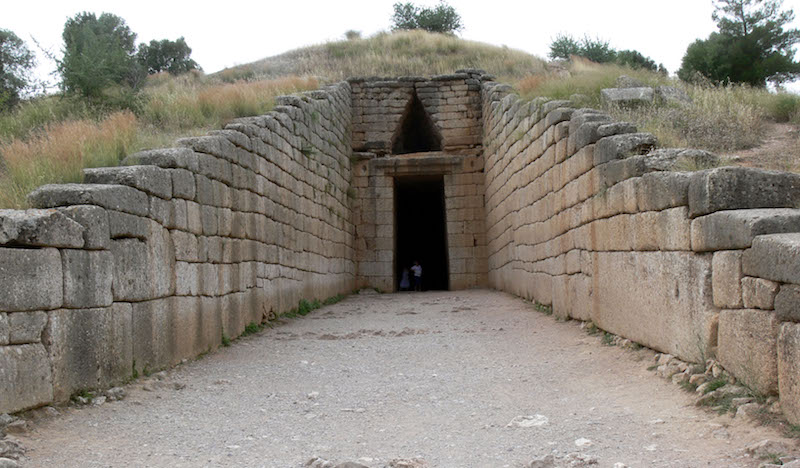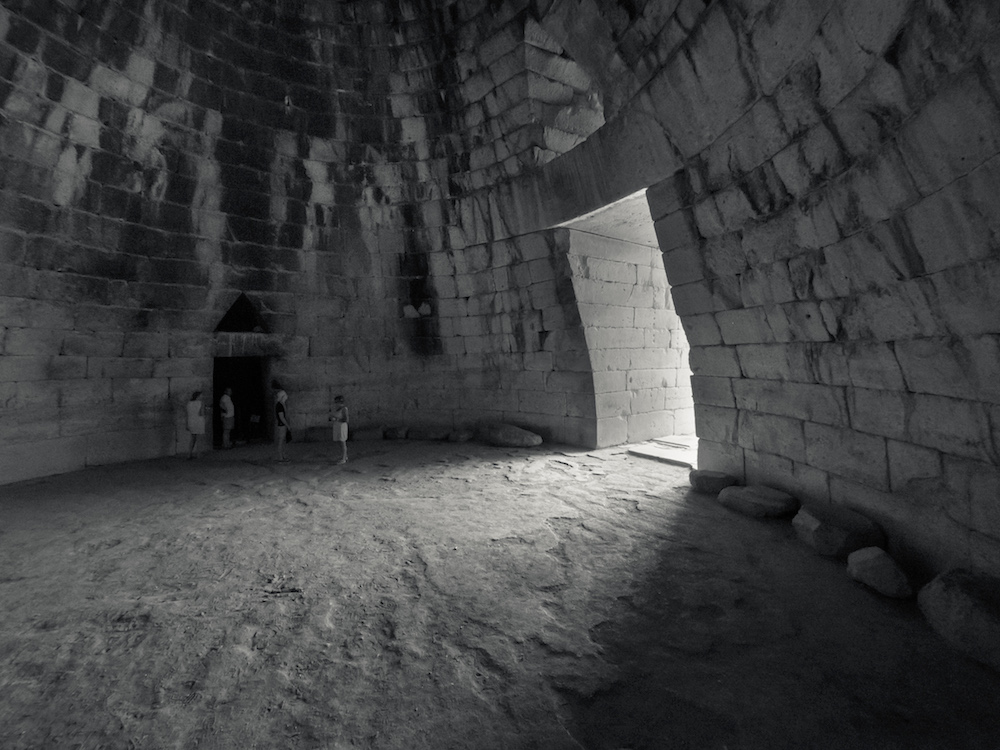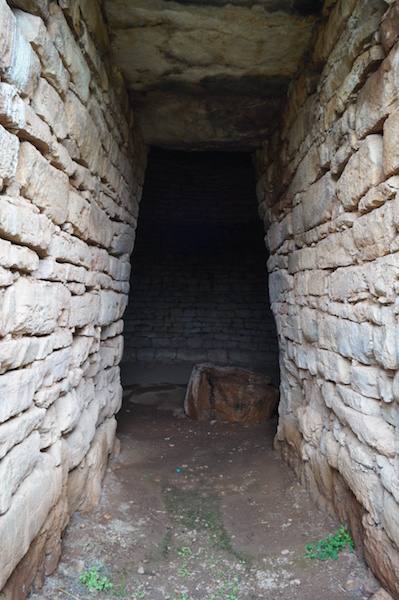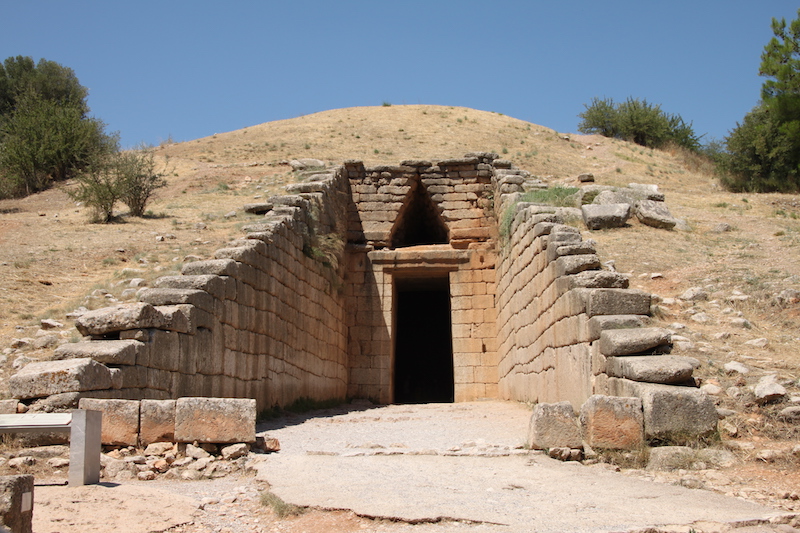Beehive tombs were a distinctive burial structure used by the Mycenaean Greeks, and they’re a cool setting for a combat encounter.

The tomb itself is underground. It may be built into the side of a hill, excavated into the flat earth, or even have an artificial hill built up over it. To enter the tomb, you pass down a long entryway that cuts into the earth. Most tombs only had one chamber: a round, vaguely conical affair shaped like a beehive. Particularly large tombs, like the so-called ‘Treasury of Atreus’ (pictured above and below) might have small side chambers.

Beehive tombs vary in size. The Treasury of Atreus is 48 feet in diameter and 44 feet high. At the other end of the scale, one beehive tomb outside Colophon had a diameter of only 13 feet.
Because beehive tombs are so conspicuous, they remained culturally relevant long after the society that built them was replaced. Greek traveler Pausanias, writing over a millennium after these tombs were constructed, dutifully records them as local landmarks and tells stories about their occupants. Whether the stories have any truth to them is anyone’s guess, but it’s likely the locals he heard them from believed them.

Beehive tombs make good places for a a combat encounter. Pair them with monsters that climb on the ceiling like geckos. That way, the PCs can’t just stand in the entrance and hold the monsters off (it’s the smart choice tactically, but it’s boring). Instead, by walking on the ceiling through the open doorway, the monsters can bypass the party’s blockade, forcing a moving combat that explores the outside and inside of the tomb. The outside works like a normal hill, except the entrance serves as a chasm that sticks out like a single spoke in a wheel. The inside is a cramped, confined space perfect for area of effect attacks.

These tombs also make great special terrain for mass combat. If you’re about to have two armies clash, sprinkle a few beehive tombs across the battlefield. They’ll provide some fun local color, they can potentially disrupt someone’s formation, and they’re great places to stick scouts. Xenophon recounts that armies on maneuver in Ionia would place scouts atop burial mounds to see a little farther. Indeed, if the PCs are riding with the army, they could be the ones sent to climb a burial mound, perhaps only to discover that enemy scouts are already there, lying in wait.

Finally (and most obviously) beehive tombs make great dungeon entrances. If you’re looking for a way to get your party to stumble across an unknown dungeon complex, have the PCs hole up in a beehive tomb for the night. Around midnight, they start to hear strange noises coming from under the bier. Heck, a beehive tomb could even be the top of the head of a buried colossus whose innards are a dungeon. Consider the AD&D module Earthshaker.







